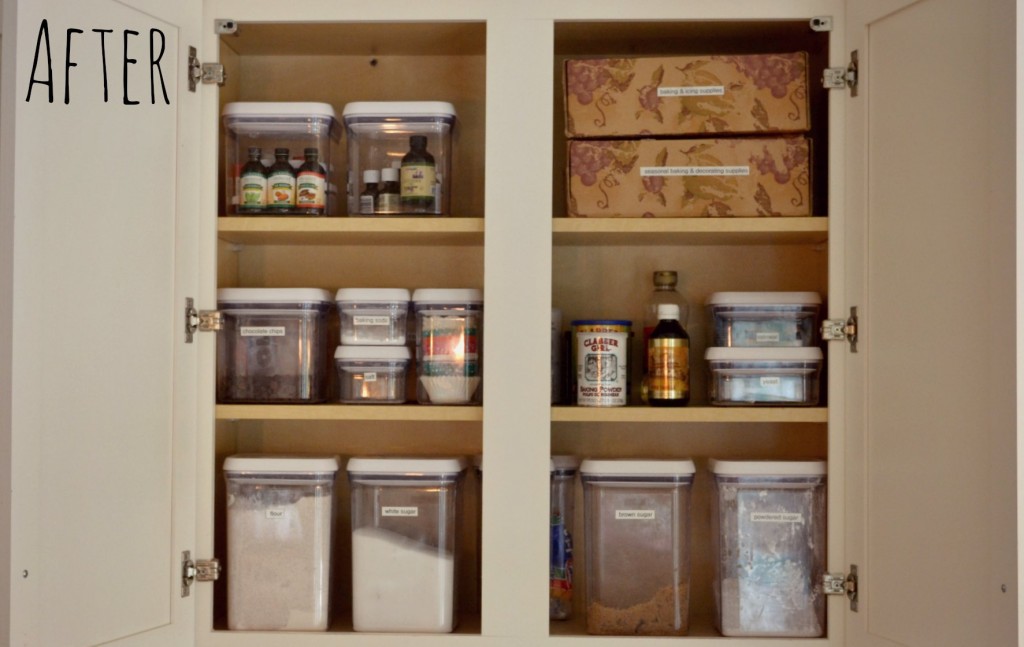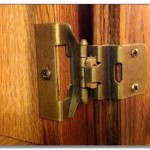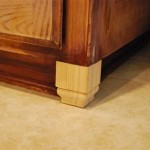Best Way to Deep Clean Kitchen Cabinets
Kitchen cabinets, often subjected to grease splatters, food stains, and accumulated dust, require regular deep cleaning to maintain their appearance and hygiene. The process, when executed correctly, not only revitalizes the aesthetic appeal of the kitchen but also contributes to a healthier living environment. This article outlines a comprehensive approach to deep cleaning kitchen cabinets, providing step-by-step instructions and highlighting essential considerations.
The effectiveness of a deep clean hinges on employing appropriate tools and cleaning solutions. Choosing the right materials ensures optimal cleaning results without damaging the cabinet surfaces. Damage can range from discolouration to irreversible structural weakening, emphasizing the importance of informed selection.
Preparation is paramount. Before commencing the cleaning process, gather the necessary supplies and prepare the workspace. This preliminary step streamlines the operation and minimizes potential disruptions and inconveniences.
Gathering Essential Supplies
A successful deep clean requires a carefully curated selection of tools and cleaning agents. The types of cabinets, the nature of the grime, and the desired level of cleanliness all influence the choice of supplies. The following items are generally considered essential:
Cleaning Solutions: A mild dish soap is often sufficient for general cleaning. However, for tougher stains and grease, specialized cabinet cleaners or a homemade solution of vinegar and water may be necessary. Solvent-based cleaners should be approached with caution and used only when other options prove ineffective, as they can potentially damage the finish of the cabinets.
Microfiber Cloths: Microfiber cloths are ideal for cleaning cabinet surfaces due to their ability to lift dirt and grime without scratching. Their absorbent nature also aids in effectively wiping away cleaning solutions.
Soft-Bristled Brush: A soft-bristled brush is useful for scrubbing crevices and textured surfaces. An old toothbrush can be used to get into tiny detailing and corners. It ensures a more thorough cleaning, especially in areas that are difficult to reach with a cloth.
Warm Water: Warm water is essential for rinsing surfaces and diluting cleaning solutions. Ensure the water is not excessively hot, as this can potentially damage certain cabinet finishes or cause discoloration.
Spray Bottle: A spray bottle is useful for applying cleaning solutions evenly to the cabinet surfaces. It allows for controlled application and prevents oversaturation.
Protective Gear: Wearing rubber gloves protects the hands from harsh cleaning chemicals and potential irritants. Safety glasses can also be worn to prevent splashes of cleaning solution from entering the eyes.
Sponges: Non-abrasive sponges can be used for gently scrubbing surfaces. It is important to avoid abrasive sponges, as they can scratch and damage the cabinet finish.
Old Towels: Old towels are useful for drying the cabinets after cleaning. Using clean towels ensures that no additional dirt or grime is transferred back onto the surfaces.
Step Stool or Ladder: A step stool or ladder may be necessary to reach high cabinets. Ensure the step stool or ladder is stable and secure before use.
Preparing the Workspace for Effective Cleaning
A well-prepared workspace contributes significantly to the efficiency and effectiveness of the deep cleaning process. Removing obstacles and protecting surrounding surfaces minimizes the risk of damage and facilitates easy access to all areas of the cabinets.
Clear the Countertops: Remove all items from the countertops below the cabinets. This provides ample space to work and prevents these items from becoming soiled or damaged.
Protect the Floor: Place drop cloths or old towels on the floor beneath the cabinets to protect it from drips and spills. This is particularly important for delicate flooring materials such as hardwood or tile.
Remove Hardware (Optional): Removing cabinet hardware, such as knobs and pulls, allows for a more thorough cleaning of both the hardware and the cabinet surfaces around it. It also prevents the hardware from being damaged by cleaning solutions.
Ventilate the Area: Open windows or turn on the kitchen fan to ensure adequate ventilation. This helps to dissipate any fumes from cleaning solutions and promotes a healthier working environment.
Step-by-Step Deep Cleaning Process
Following a structured approach ensures a comprehensive and effective deep clean. The following steps outline a systematic process for cleaning kitchen cabinets, from initial preparation to final drying.
Dusting: Begin by dusting the cabinets with a microfiber cloth to remove loose dirt and debris. Pay particular attention to the tops of the cabinets, which tend to accumulate the most dust.
Applying Cleaning Solution: Mix a mild cleaning solution of dish soap and warm water in a spray bottle. Alternatively, prepare a solution of equal parts vinegar and water. Spray the cleaning solution onto a microfiber cloth, rather than directly onto the cabinets, to prevent oversaturation. Avoid spraying directly to the hinges and the metallic parts to avoid corrosion.
Washing the Cabinets: Gently wipe the cabinets with the damp microfiber cloth, working from top to bottom. Pay attention to areas with visible stains or grease buildup. Use the soft-bristled brush to scrub any stubborn spots or crevices.
Rinsing: After washing the cabinets, rinse them with a clean, damp microfiber cloth. This removes any remaining cleaning solution and prevents residue buildup. Ensure the cloth is wrung out well to avoid oversaturating the cabinets.
Drying: Dry the cabinets with a clean, dry towel. This prevents water spots and helps to restore the luster of the finish. Ensure all surfaces are thoroughly dried, including the insides of the doors and drawers.
Cleaning Hardware: If the hardware was removed, clean it separately with a mild cleaning solution. Use a soft-bristled brush to remove any dirt or grime. Rinse the hardware thoroughly and dry it with a clean towel. Reattach the hardware to the cabinets after it is completely dry.
Addressing Stubborn Stains: For stubborn stains or grease buildup, a stronger cleaning solution may be necessary. However, always test the solution on an inconspicuous area of the cabinet first to ensure it does not damage the finish. Some effective options for removing stubborn stains include baking soda paste, lemon juice, or a commercial degreaser.
Maintaining Cleanliness: After deep cleaning the cabinets, it is important to maintain their cleanliness through regular cleaning. Wipe down the cabinets with a damp microfiber cloth once a week to remove any dirt or spills. This prevents the buildup of grime and makes future deep cleaning sessions easier.
Specific Cabinet Material Considerations: Different cabinet materials require specific cleaning approaches. Wood cabinets, for example, should be cleaned with a gentle cleanser and dried immediately to prevent water damage. Laminate cabinets are more resistant to moisture, but harsh chemicals can still damage the surface. Before cleaning, it's crucial to identify the cabinet material.
Wooden Cabinets: Wood cabinets are susceptible to water damage and should be cleaned with a gentle cleanser and a damp, not wet, cloth. Avoid using abrasive cleaners, as they can scratch the finish.
Laminate Cabinets: Laminate cabinets are more durable than wood cabinets and can be cleaned with a wider range of cleaning solutions. However, harsh chemicals should still be avoided.
Painted Cabinets: Painted cabinets are prone to chipping and scratching, so it is important to use a gentle cleaning solution and a soft cloth. Avoid using abrasive cleaners or scrub brushes.
Glass-Fronted Cabinets: Glass-fronted cabinets require special attention to avoid streaks and smudges. Use a glass cleaner and a microfiber cloth to clean the glass surfaces. It is recommended to remove any items inside the cabinet to provide a more unrestricted access for cleaning.
By following these steps and considerations, kitchen cabinets can be effectively deep cleaned, restoring their appearance and contributing to a cleaner, healthier kitchen environment. Regular maintenance and prompt attention to spills and stains will further preserve the cleanliness and condition of the cabinets.

How To Clean Kitchen Cabinets Everyday Skate

How To Deep Clean Kitchen Cabinets And Keep Them Looking Gorgeous Everyday Skate

Kitchen Deep Cleaning Checklist Tips Polished Habitat

How To Clean Wood Kitchen Cabinets Like A Boss Shelfgenie

How To Clean White Kitchen Cabinets 3 Best Ways Avoid Abbotts At Home

How To Clean Kitchen Cabinets 9 Basics Bob Vila

How To Deep Clean The Kitchen And Scentsible

How To Deep Clean Your Kitchen Spring Cleaning Tips

3 Super Easy Ways To Clean White Kitchen Cabinets And Avoid

Ways To Deep Clean Kitchen Cabinets Ikonni
Related Posts








